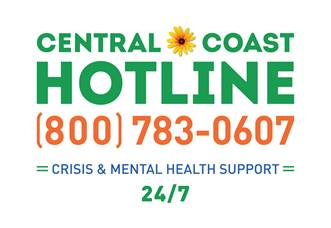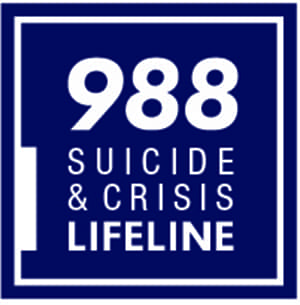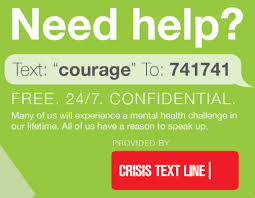Alcohol and Drug Information
Taken from National Council on Alcoholism and Drug Dependence:
The cost and consequences of alcoholism and drug dependence place an enormous burden on American society. As the nation’s number one health problem, addiction strains the economy, the health care system, the criminal justice system, and threatens job security, public safety, marital and family life.
Addiction crosses all societal boundaries, affects every ethnic group, both genders, and people in every tax bracket. Today, however, Americans increasingly recognize addiction as a disease -- a disease that can be treated.
The scope of the problem:
Alcoholism: Alcohol is the most commonly used addictive substance in the U.S. 17.6 million people, or one in every 12 adults, suffer from alcohol abuse or dependence along with several million more who engage in risky drinking patterns that could lead to alcohol problems. More than half of all adults have a family history of alcoholism or problem drinking, and more than seven million children live in a household where at least one parent is dependent or has abused alcohol.
Drug Dependence: According to the National Survey on Drug Use and Health (NSDUH), an estimated 20 million Americans aged 12 or older used an illegal drug in the past 30 days. This estimate represents 8% percent of the population aged 12 years old or older. Additionally, the nonmedical use or abuse of prescription drugs--including painkillers, sedatives, and stimulants--is growing, with an estimated 48 million people ages 12 and older using prescription drugs for nonmedical reasons. This represents approximately 20 percent of the U.S. population.
Alcoholism and drug dependence can affect all aspects of a person’s life. Long-term use of alcohol and other drugs, both licit and illegal, can cause serious health complications affecting virtually every organ in the body, including the brain. It can also damage emotional stability, finances, career, and impact family, friends and the entire community in which an alcoholic or drug abuser lives.
A SNAPSHOT OF ANNUAL HIGH-RISK COLLEGE DRINKING CONSEQUENCES (taken from College Drinking, created by the National Institute on Alcohol Abuse and Alcoholism (NIAAA) )
The consequences of excessive and underage drinking affect virtually all college campuses, college communities, and college students, whether they choose to drink or not.
- Death: 1,825 college students between the ages of 18 and 24 die from alcohol-related unintentional injuries, including motor vehicle crashes (Hingson et al., 2009).
- Injury: 599,000 students between the ages of 18 and 24 are unintentionally injured under the influence of alcohol (Hingson et al., 2009).
- Assault: 696,000 students between the ages of 18 and 24 are assaulted by another student who has been drinking (Hingson et al., 2009).
- Sexual Abuse: 97,000 students between the ages of 18 and 24 are victims of alcohol-related sexual assault or date rape (Hingson et al., 2009).
- Unsafe Sex: 400,000 students between the ages of 18 and 24 had unprotected sex and more than 100,000 students between the ages of 18 and 24 report having been too intoxicated to know if they consented to having sex (Hingson et al., 2002).
- Academic Problems: About 25 percent of college students report academic consequences of their drinking including missing class, falling behind, doing poorly on exams or papers, and receiving lower grades overall (Engs et al., 1996; Presley et al., 1996a, 1996b;Wechsler et al., 2002).
- Health Problems/Suicide Attempts: More than 150,000 students develop an alcohol-related health problem (Hingson et al., 2002), and between 1.2 and 1.5 percent of students indicate that they tried to commit suicide within the past year due to drinking or drug use (Presley et al., 1998).
- Drunk Driving: 3,360,000 students between the ages of 18 and 24 drive under the influence of alcohol (Hingson et al., 2009).
- Police Involvement: About 5 percent of 4-year college students are involved with the police or campus security as a result of their drinking (Wechsler et al., 2002), and 110,000 students between the ages of 18 and 24 are arrested for an alcohol-related violation such as public drunkenness or driving under the influence (Hingson et al., 2002).
- Alcohol Abuse and Dependence: 31 percent of college students met criteria for a diagnosis of alcohol abuse and 6 percent for a diagnosis of alcohol dependence in the past 12 months, according to questionnaire-based self-reports about their drinking (Knight et al., 2002).
Health Risks Associated with Alcohol Use:
- Alcohol is a depressant that decreases the responses of the central nervous system, which can lead to respiratory depression and failure.
- Excessive drinking can cause liver damage and psychotic behavior
- Alcohol can enhance the effects of other drugs and can lead to overdose
- Alcohol abuse can increase the risk of stroke, heart failure, seizures, mouth and throat cancer, cirrhosis of the liver, and duodenal ulcers.
- Alcohol use is especially dangerous during pregnancy and increases the risk of low-birth weight babies, intrauterine growth retardation, feeding difficulties and long-term developmental problems.
Controlled Substances - Uses and Effects
The use of drugs and alcohol may pose significant health risks including hangovers, blackouts, general fatigue, impaired learning, dependency or death. Drugs known as "designer drugs" are a unique combination of the drugs listed in the "Controlled Substances - Uses and Effects" chart, which describes various drug categories and their risks. Drugs known as "designer drugs" are a unique combination of the drugs listed in this chart.
Resources
Alcoholics Resource Center/ AA
Drugs of Abuse: A DEA Resource Guide 2020 Edition
Drug and Alcohol Abuse Prevention Program Report 2022 - 2023 & 2023 - 2024





